
|
|
|
|
 |
|||||||||||
|
|||||||||||
|
|
|
|
About the Institute of Chemistry, Slovak Academy of Sciences
Research directions and activities
 With respect to history and long tradition, the scientific activities are focused mainly on chemistry and biochemistry of carbohydrates with emphasis on following research directions:
Synthesis and structure of mono- and oligosaccharides; conformational analysis; isolation and structural analysis of biologically active polysaccharides and their chemical modification; structure, function and mechanism of action of glycanases; microbial and plant polysaccharides; structure - activity relationship of plant cell wall derived oligosaccharides; enzyme systems degrading xylan, cellulose and pectin; gene engineering of nutritive and regulation proteins; bioengineering of polysaccharides, glycoconjugates and related compounds; ecology, taxonomy and phylogenesis of yeasts; synthesis of biologically active carbohydrates combined with nitrogen heterocyclic compounds. With respect to history and long tradition, the scientific activities are focused mainly on chemistry and biochemistry of carbohydrates with emphasis on following research directions:
Synthesis and structure of mono- and oligosaccharides; conformational analysis; isolation and structural analysis of biologically active polysaccharides and their chemical modification; structure, function and mechanism of action of glycanases; microbial and plant polysaccharides; structure - activity relationship of plant cell wall derived oligosaccharides; enzyme systems degrading xylan, cellulose and pectin; gene engineering of nutritive and regulation proteins; bioengineering of polysaccharides, glycoconjugates and related compounds; ecology, taxonomy and phylogenesis of yeasts; synthesis of biologically active carbohydrates combined with nitrogen heterocyclic compounds.The Institute organizes regularly international scientific conferences and symposia. The 13th European Carbohydrate Symposium, 12th Bratislava Symposium on Saccharides in the Smolenice Castle, 39th Annual Conference on Yeasts, and 20th International Specialized Symposium on Yeasts were organized recently.
The main editing activity of the Institute is the publishing of Chemical Papers, the only Slovak chemistry journal printed in English. The Institute houses the Culture Collection of Yeasts, the largest yeast collection in Central Europe.
The Production Department provides facilities for a large-scale isolation of natural compounds and synthesis of saccharides and their derivatives for commercial purposes. Some rare saccharides are produced here on a monopoly basis.
The Institute closely cooperates with many research establishments abroad and within the country. In this respect, a number of scientific projects have an interdisciplinary character.
The Institute is a training base for scientific specializations: organic chemistry, biochemistry, microbiology, physical chemistry, macromolecular chemistry, biotechnologies. In this field, doctoral and postdoctoral study including also study for foreign students is organized.
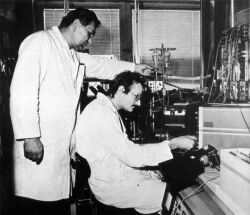 The Slovak Academy of Sciences was founded in 1953 as an institution integrating the Slovak science. Our Institute came into existence at the same time by fusion of the Research Institute for Pharmacy and Biochemistry and the Research Institute for Sugars and Carbohydrates. Its original name, the Institute of Chemical Technology of Organic Compounds, changed into the current name, the Institute of Chemistry, in 1955, when the incorporation of the Laboratory for Research of Wood, Cellulose and Synthetic Fibres and the Laboratory of Inorganic Chemistry took place. Further growth of the Institute prevented the initial centralization tendences of its first director Academician J. Vasatko and, as a result, three independent Institutes were separated from the Institute of Chemistry: Institute of Inorganic Chemistry and Institute of Wood and Cellulose Technology in 1960 and Institute of Experimental Pharmacology in 1963. The Institute of Wood and Cellulose Technology, directed by Professor J. Kozmal, provided the core for the new Polymer Institute and a plant polysaccharide group, which was attached to the Institute of Chemistry. The Slovak Academy of Sciences was founded in 1953 as an institution integrating the Slovak science. Our Institute came into existence at the same time by fusion of the Research Institute for Pharmacy and Biochemistry and the Research Institute for Sugars and Carbohydrates. Its original name, the Institute of Chemical Technology of Organic Compounds, changed into the current name, the Institute of Chemistry, in 1955, when the incorporation of the Laboratory for Research of Wood, Cellulose and Synthetic Fibres and the Laboratory of Inorganic Chemistry took place. Further growth of the Institute prevented the initial centralization tendences of its first director Academician J. Vasatko and, as a result, three independent Institutes were separated from the Institute of Chemistry: Institute of Inorganic Chemistry and Institute of Wood and Cellulose Technology in 1960 and Institute of Experimental Pharmacology in 1963. The Institute of Wood and Cellulose Technology, directed by Professor J. Kozmal, provided the core for the new Polymer Institute and a plant polysaccharide group, which was attached to the Institute of Chemistry.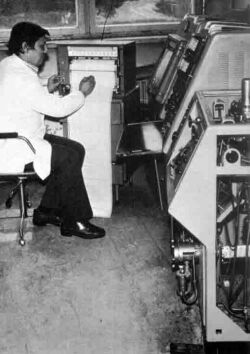 Research activities of the Institute early after foundation overlapped those of the former institutes of applied research. Later they were gaining more the character of fundamental research. Pharmaceutical industry was provided with new procedures for isolation of opium alkaloids and production of morphine, caffeine, theophylline, 1-ephedrine, hetrozane and panthotenic acid. Several plant genera were investigated for content of alkaloids and glycosides. Various types of model alkaloid derivatives were synthesized. Biologically active compounds were subjected to subsequent pharmaceutical and therapeutical examinations. Research activities of the Institute early after foundation overlapped those of the former institutes of applied research. Later they were gaining more the character of fundamental research. Pharmaceutical industry was provided with new procedures for isolation of opium alkaloids and production of morphine, caffeine, theophylline, 1-ephedrine, hetrozane and panthotenic acid. Several plant genera were investigated for content of alkaloids and glycosides. Various types of model alkaloid derivatives were synthesized. Biologically active compounds were subjected to subsequent pharmaceutical and therapeutical examinations.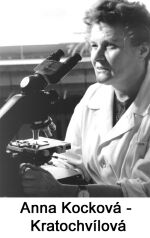 Research leading to increased crops, enhanced sweetness and technological quality of sugar beet was important for the food industry. Optimum composition and concentration of microelements in soil for sugar beet crops were established. Studies of the coagulation processes in colloid systems contributed to purification of sugar beet juices and classification of fruit juices. Significant results were obtained in the area of utilization of waste products and production of lactic acid. Research leading to increased crops, enhanced sweetness and technological quality of sugar beet was important for the food industry. Optimum composition and concentration of microelements in soil for sugar beet crops were established. Studies of the coagulation processes in colloid systems contributed to purification of sugar beet juices and classification of fruit juices. Significant results were obtained in the area of utilization of waste products and production of lactic acid.The pulp and paper industry was supplied with improved procedures for sulfite cooking and new alkaline cooking procedure for production of chemical pulp from beechwood. Methods for characterization of pulp properties were elaborated.
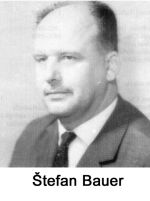 After final organization changes in the fifties, research activities of the Institute acquired new dimensions. The most influential personality in the period 1962-1974 was the new director, Dr.Ing. Stefan Bauer, DrSc., who recognized the most attractive research trends in foreign science together with the needs of our industry. In this period the Institute became definitely specialized on the chemistry and biochemistry of saccharides, chemistry of wood components and alkaloids, with main emphasis on basic research. Fortunately, at the same time the Institute obtained a new building in the Academy district Patronka. This was an important event for further progressive development of all Institute units, including the Departments of mono- and oligosaccharides, biochemistry of saccharides, cellulose, hemicelluloses and alkaloids. Supporting structures were the Department of analytical chemistry, Information centre with well furnished library, and later also the pilot plant unit. After final organization changes in the fifties, research activities of the Institute acquired new dimensions. The most influential personality in the period 1962-1974 was the new director, Dr.Ing. Stefan Bauer, DrSc., who recognized the most attractive research trends in foreign science together with the needs of our industry. In this period the Institute became definitely specialized on the chemistry and biochemistry of saccharides, chemistry of wood components and alkaloids, with main emphasis on basic research. Fortunately, at the same time the Institute obtained a new building in the Academy district Patronka. This was an important event for further progressive development of all Institute units, including the Departments of mono- and oligosaccharides, biochemistry of saccharides, cellulose, hemicelluloses and alkaloids. Supporting structures were the Department of analytical chemistry, Information centre with well furnished library, and later also the pilot plant unit.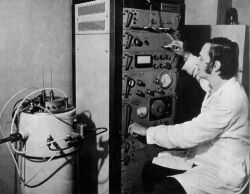 In 1975 Corresponding Member M. Repas was appointed the new director of the Institute. According to the slogan "Science, Research, Production" he emphasized more the applied aspects of research. Fortunately, even under these conditions the Institute preserved its academic character and maintained the dominance of fundamental investigations. In 1975 Corresponding Member M. Repas was appointed the new director of the Institute. According to the slogan "Science, Research, Production" he emphasized more the applied aspects of research. Fortunately, even under these conditions the Institute preserved its academic character and maintained the dominance of fundamental investigations.After political changes in 1989 and 1990, the director became Corresponding Member I. Tvaroska, who guaranteed again the prevalence of fundamental research. Under his guidance the Institute gained a position of a well evaluated research establishment expanding its international cooperation with foremost research institutes all over the world and, at the same time, improving its economical situation by rising its commercial activities.
|